Last update: December 14, currently 102 collections online with a total of 1.776 unique models
Here is an overview of all collections that I put on display so far.
The oldest first.
Starting in Oct6ober 2025, I will put a rating on all model cars from 1 to 5 STARS, this is not an exact science, just my opinion.
– Overall rating: are the dimensions correct, is the livery attractive, does the real car have an interesting history?
– Quality details: the quality of the decals, wheels, spoilers, exhausts. Are there any antennas, wipers, towing points?
– Estimated value: all my models are out of their boxes and have been on display in my cabinets. But I kept the boxes, so I can put them in and sell them on eBay.
#001 Gulf Racing Porsche 911 RSR (February 2024)
The GTE category existed from 2016 as successor of GT2 and lasted until the end of 2023. Gulf Racing has always been present with their beautiful blue and orange Porsches.
4 models in collection
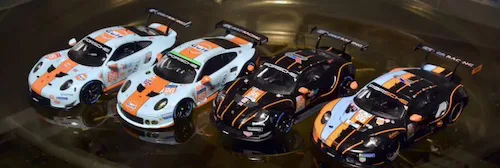
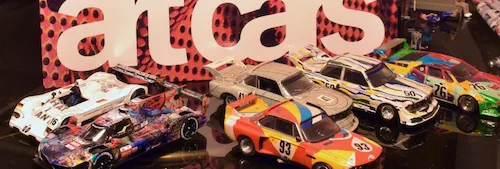
#002 BMW Art Cars (February 2024)
Hervé Poulain is an amateur racing driver, art collector and auctioneer from France. It was his idea to have famous artists paint brand new racing cars and race these at Le Mans. He and BMW started a complete new kind of racing cars.
14 models in collection
#003 TWR Jaguar (February 2024)
Tom Walkinshaw was quite successful as a racing driver before he started TWR. With TWR, he built, prepared and raced many Jaguars and took victories in Spa, Le Mans and Daytona.
13 models in collection
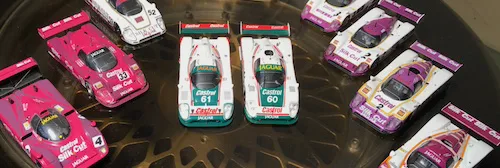
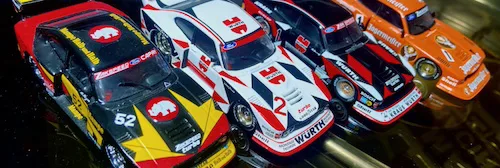
#004 Zakspeed Ford Capri turbo (February 2024)
Erich Zakowski was famous for his well prepared Fords. In 1977 his Escorts challenged to keep up with the BMW 320’s and the turbocharged 2002 from Schnitzer, so for the 1978 season he developed a revolutionary car.
13 models in collection
#005 Martini Porsche 911 Carrera (February 2024)
The success story of the 1973 Porsche Carrera RSR begins by
winning the 24 hour race on its debut. Many successes followed and also some very interesting technical and aerodynamical evolutions.
13 models in collection

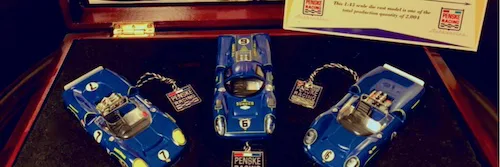
#006 Sunoco Penske Racing (February 2024)
Penske Racing (nowadays Team Penske) founded in 1966 still operates at the highest levels in endurance racing both in IMSA and FIA WEC, Indy cars and NASCAR. Sunoco was the team’s first sponsor.
10 models in collection
#007 Coca-Cola (February 2024)
Coca Cola sponsored a number of teams and drivers. In this collection I focus on the American team from Bob Akin and a few other Porsches.
20 models in collection
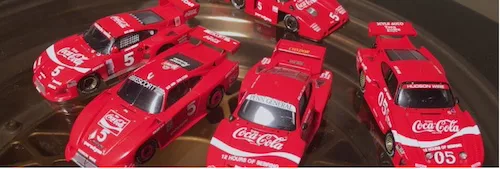
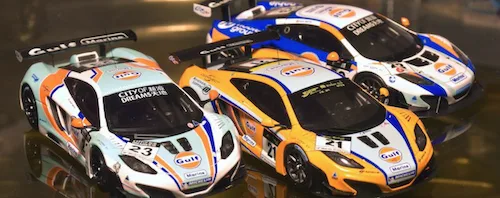
#008 Gulf GT (March 2024)
This collection was dedicated to Gulf Aston Martins, in November 2025 I added other makes. The Aston Martins can also be found in collection #078.
21 models in collection
#009 Toyota GT-One (March 2024)
Toyota was reasonably successful in the last part of the Group C era. The 3-liter TS010 and turbo-charged 94C-V both finished on the podium at Le Mans, without winning however. When the set of regulations changed towards GT1, Toyota saw new possibilities.
10 models in collection
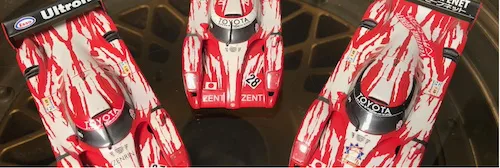
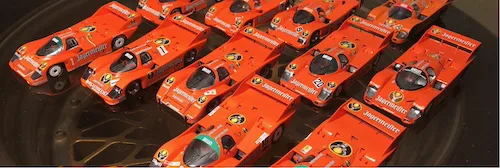
#010 Jägermeister Prototypes (March 2024)
The Porsche 956 was the ideal car for the group C regulations. When Porsche first brought it to Le Mans in 1982, they scored a convincing 1-2-3 finish. Many Porsche can be found in this collection but also the Zakspeed Ford C100.
19 models in collection
#011 Mazda (March 2024)
Group C gave constructors a lot of freedom to achieve the best result. Multiple concepts were successful, but Mazda did something completely different and mounted a 4-chamber normally aspirated rotary engine.
25 models in collection
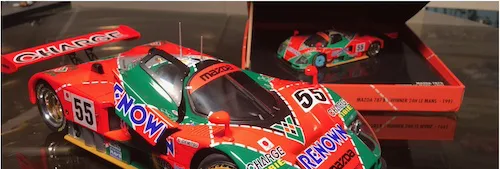
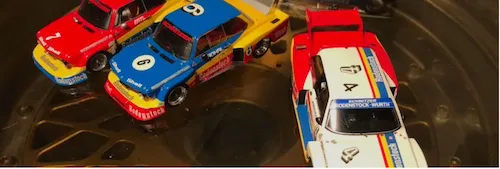
#012 Schnitzer BMW turbo (March 2024)
Schnitzer has been a racing team since 1967 and mainly raced BMW’s. The team often represented the BMW factory as official works team, but before that, they developed a range of turbocharged cars on their own.
15 models in collection
#013 Martini Porsche 935 (March 2024)
The new group 5 regulations were a perfect fit for Porsche. The 911 turbo was the perfect car for this series and the Germans already had a lot of experience with the RSR turbo and 934.
15 models in collection + 1 pit crew
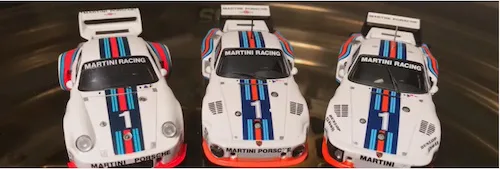
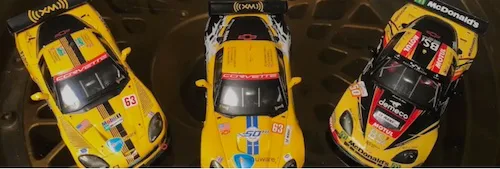
#014 Corvette Racing (March 2024)
This blog begins with the factory Corvettes racing in Le Mans in 2003. I show the factory cars and privateer Corvette models that are in my collection.
27 models in collection
#015 Ferrari 333 SP (March 2024)
The Ferrari 333 SP was Ferrari’s car for the new World Sport Cars category, the successor of the IMSA GTP. The WSC cars were open-top, flat-bottomed sports-prototypes with production based engines.
14 models in collection
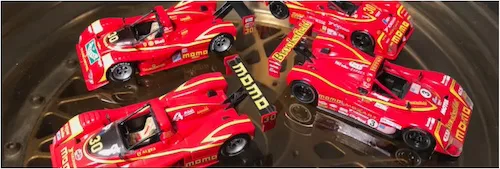
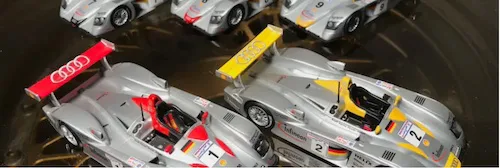
#016 Joest Audi R8 (March 2024)
Audi had been very successful in international rallying and several touring car championships. But the German luxury brand wanted more and set their target on Le Mans. Well, that turned out quite good, especially with Joest as partner.
18 models in collection
#017 Joest Audi TDI (March 2024)
Audi dominated sports car racing from 2000 to 2005 with their R8 (and nephew Bentley Speed 8). In 2006 Audi did something completely different and again shocked sports car racing: They threw a very big diesel engine in.
17 models in collection
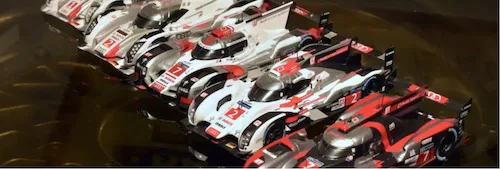
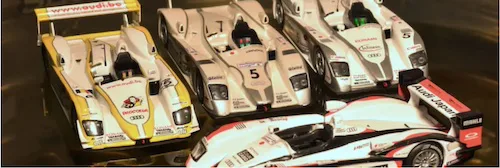
#018 Audi R8 customer teams (March 2024)
A limited number of customer teams that were often supported by local Audi distributors, received a one year old Audi R8. When Joest stopped racing the R8 at Le Mans and the American Le Mans Series, these teams took over.
19 models in collection
#019 Nissan Group C & IMSA GTP (March 2024)
Just as many other manufacturers, Nissan wanted to play a part in Motorsport history. In this blog I will give an overview of the many cars that Nissan raced in Group C and IMSA GTP and that I have a 1/43 scale model car.
23 models in collection
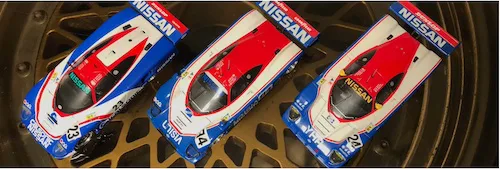
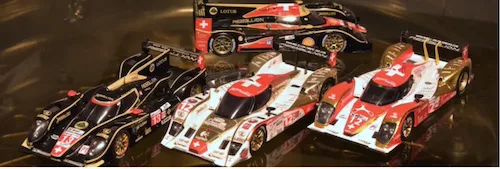
#020 Rebellion (April 2024)
Rebellion. An up-market watch maker, but also a serious racing team that would fight the big brands such as Audi, Porsche and Toyota.
18 models in collection
#021 Gulf Ford GT40 (April 2024)
This one is about the JWA racing team that raced the GT40’s and Mirage M1 in Gulf livery after Ford quit because the regulations changed and the big V8’s that Ford was using, were banned.
12 models in collection
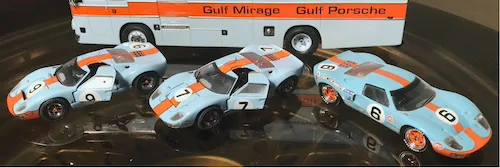
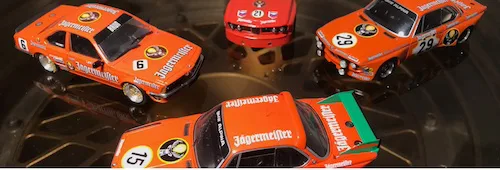
#022 Jägermeister Touring cars (April 2024)
Jägermeister is a German liqueur producer that sponsored a lot of cars and teams, especially in the German and European championships, here I will focus on the many touring cars that wore the bright orange livery.
21 models in collection
#023 Mobil1 (April 2024)
Mobil1, part of ExxonMobil, is a lubricant and oil producer of which stickers can be found on many racing cars. But here I only show the cars that have an actual Mobil 1 livery, not just a sticker.
23 models in collection
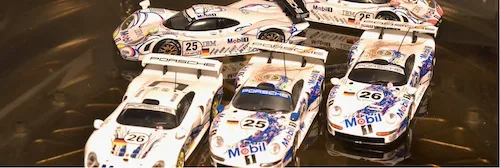
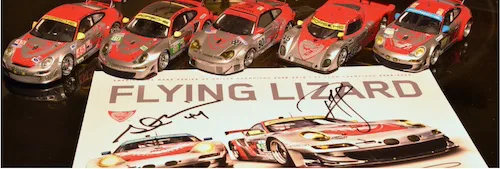
#024 Flying Lizard Porsche (April 2024)
Flying Lizard made its debut in the American Le Mans Series scene in 2004, becoming a Porsche factory-supported team in 2007, racing in the GT categories.
10 models in collection
#025 Lancia Martini (April 2024)
Italian liqueur brand Martini has been faithful sponsor of the works Porsche team for many years. But in 1980 they switched to Lancia and achieved great successes together in racing and rally.
13 models in collection
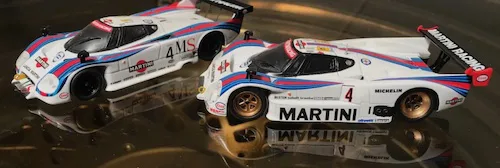
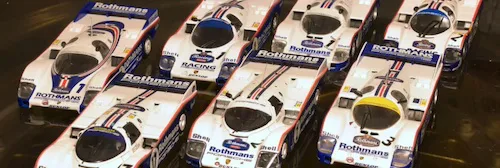
#026 Rothmans Porsche (April 2024)
After Martini left Porsche for Lancia, the German factory team teamed up with tobacco company Rothmans. It was a successful relationship with 4 Le Mans wins, many more world championship victories and success in the grueling Dakar rally.
16 models in collection + 1 pit crew
#027 Gulf McLaren F1 GTR (April 2024)
The McLaren F1 GTR was designed by Gordon Murray as the ultimate street car. It also was the ideal car for the GT1 series were it competed against the Ferrari F40 and Porsche 911 GT2 and exotics such as the Venturi 600 LM.
14 models in collection
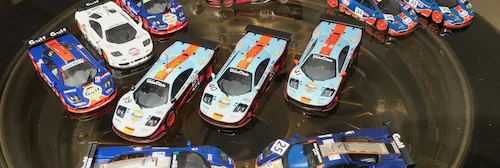
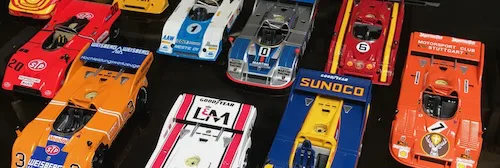
#028 Porsche 917 Spyder & turbo (April 2024)
The 917 was a bit too heavy and lacked power to be a winner in Can-Am, so Porsche had to think of a different solution to gain additional horsepower.
18 models in collection
#029 Racing for Holland / Racing Team Nederland (April 2024)
We, Dutch have the awkward need to use our country name in the team name: Dutch National Racing Team, Racing for Holland, Carsport Holland, Racing Team Nederland …
22 models in collection
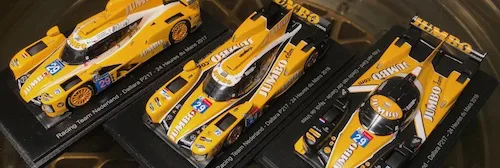
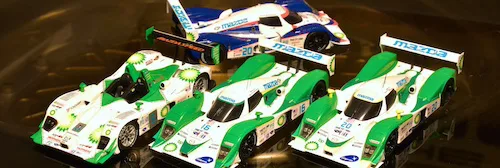
#030 BP (April 2024)
British Petroleum sponsored many racing cars in the 70’s and 80’s of the previous century. Of course many more teams and cars used BP oils and fuels, but here I present only the cars in the yellow and green livery of BP in my collection.
21 models in collection
#031 Peugeot (April 2024)
Peugeot came to Le Mans and the world championship full force in 1991, but only for a short while. More than 15 years later they would be back again.
20 models in collection

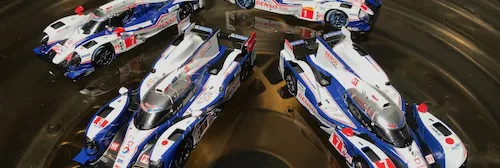
#032 Toyota Hybrid (April 2024)
Toyota was developing a hybrid racing car for the Le Mans LMP1 category. Plan was to test in 2012 and make its debut in 2013, the ACO asked Toyota if they could speed up the program and race at Le Mans already in 2012. And they did.
14 models in collection
#033 Porsche Salzburg (May 2024)
Porsche entered many sports cars in races, and to support the factory external semi-factory teams were set up. In 1969, Porsche Salzburg became such a works team and competed in the World Championship in 1970.
11 models in collection
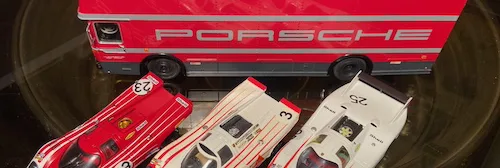
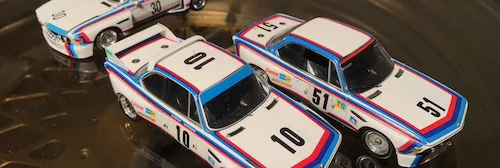
#034 BMW Motorsport (part I) (May 2024)
When BMW started their works team in the 1970’s, they introduced a new color combination to the race tracks thatis still in use; the red-purple-blue on a white background.
20 models in collection
#035 BMW Motorsport (part II) (May 2024)
The famous BMW color scheme is still in use. In this blog you will find my models from 1993 until now.
21 models in collection
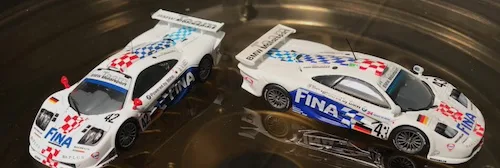
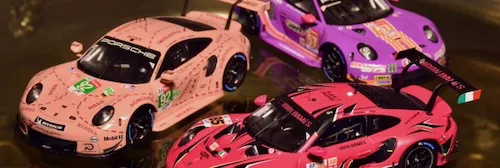
#036 Pink and Purple (May 2024)
The new designed Porsche 917/20 was wider and shorter than the regular 917L. Someone called the car a pig and Porsche designer Anatole Lapine’s idea for the new livery was born. It was the first of the Pink Porsches and quite a few would follow.
34 models in collection
#037 Porsche 907, 908 & 917 (May 2024)
The factory cars in the early years were often grey but between 1967 and 1969, Porsche System entered mainly white cars with distinctive colors on the front.
25 models in collection
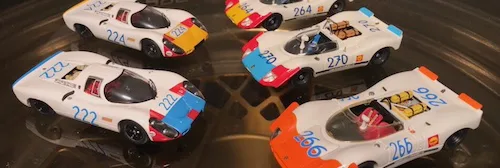
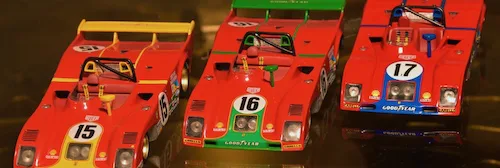
#038 Ferrari prototypes (May 2024)
A new generation of Ferrari sportscars and prototypes evolved where the space frames were covered with aluminium panels and later replaced by a full monocoque chassis.
11 models in collection
#039 Transporters (May 2024)
It’s nice to race different race tracks all over the continent with your GT or sports car, but first … you have to get there. In the history of motorsport we saw many great transporters, of which I have a few in my collection.
14 models in collection

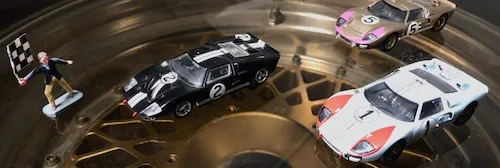
#040 Ford prototypes (May 2024)
The GT40 with its 4.7 liter Weslake engines was not quicker than the Ferraris and far from reliable. But when Caroll Shelby put 7-liter Nascar engines in the improved GT40, dubbed MkII, things changed.
20 models in collection
#041 British Brands (June 2024)
At first, this collection contained only Bentley. In October 2025 I decided to add also other British brands. Now you will see familiar brands and ‘exotics’ such as Lister, Marcos, Morgan and TVR also.
30 models in collection
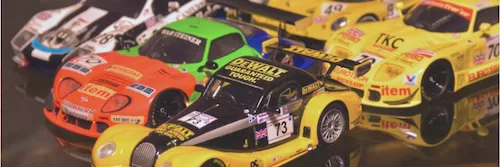
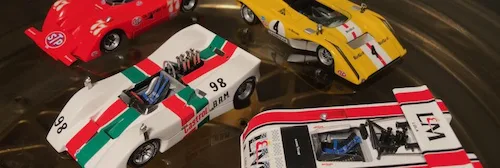
#042 Can-Am & Interserie (June 2024)
The Can-Am was a racing series in North America for group 7 cars. There were virtually no restrictions to the cars. Here are Lola, McLaren, Chaparral, March and others, the Porsches are in #028.
25 models in collection
#043 FATurbo (June 2024)
F.A.T. International / FATurbo EXPRESS was an international transport company that sponsored many Porsche teams in the 1980s and 1990’s.
21 models in collection
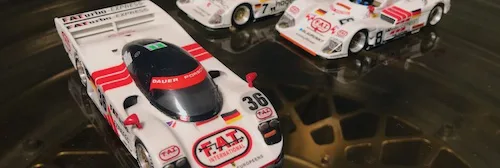
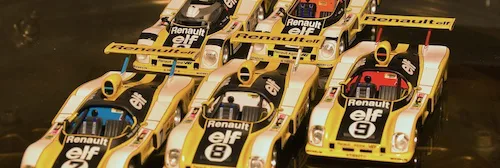
#044 Renault & Alpine (June 2024)
Renault was one of the pioneers of the turbo engine. After winning Le Mans, Renault moved on and introduced the turbo to the Formula One.
24 models in collection
#045 Ecurie Francorchamps (July 2024)
Jacques Swaters was a racing driver when he started Ecurie Francorchamps. Swaters is distributor for Ferrari in Belgium, so he only races these Italian cars.
15 models in collection
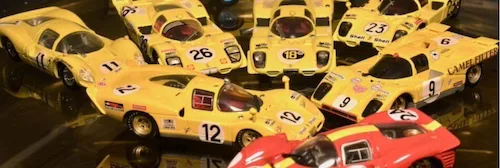
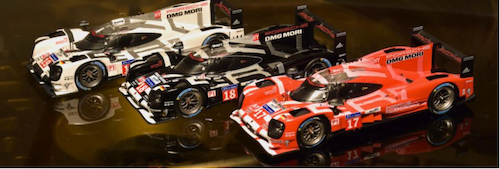
#046 Porsche LMP & HY (July 2024)
Porsche had won Le Mans 1998 with the GT1/98, their last car based on the legacy 962 technology. The flat-6 engine is still being used in the 911 models, but the prototypes got new engines and some even hybrid technology.
22 models in collection
#047 Spyker (July 2024)
The Spykers that raced at Le Mans competed against Porsche 911, Ferrari 360 and TVR Tuscans, all cars of which the street version were 50% cheaper. Not very good for your image, I guess.
9 models in collection
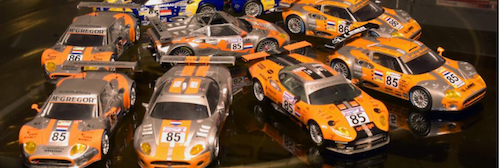

#048 Vipers (July 2024)
The Viper has been developed and raced by the French Oreca team and this works team would make the Viper with its huge V10 engine, the leading GT before it was surpassed by the Corvette.
34 models in collection
#049 Courage (July 2024)
Yves Courage began to build his own cars. The first were group C cars that were called Cougar, later he would change this to his surname Courage.
with YouTube video
25 models in collection
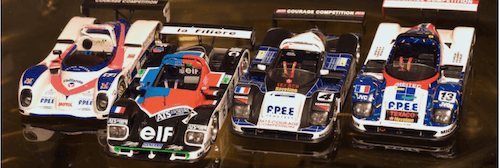
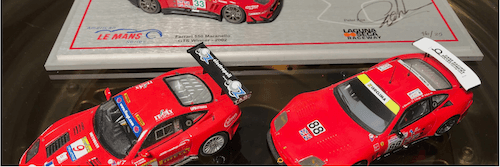
#050 Ferrari GT V12 (July 2024)
Ferrari is famous for its V12-engines. The modern V8 and V6 turbo versions are more powerful but don’t bring the emotion that a high-revving 12 cylinder does.
23 models in collection
#051 Gulf Porsche 917 (July 2024)
JWA is most famous because of the Gulf liveried Porsche 917, which was the star in Steve McQueen’s movie “Le Mans”.
32 models in collection + 1 pit crew
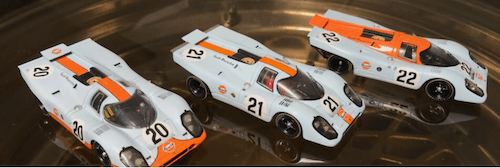
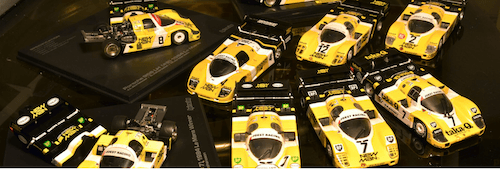
#052 Joest Porsche 956 & 962 (August 2024)
Joest Racing has been very successful since the early 80’s, they won Le Mans already 8 times. In this blog you will find mainly Porsche 956 and 962’s.
23 models in collection
#053 Ferrari GT V6 & V8 (August 2024)
Ferrari achieved great success with their V8 powered cars starting with the famous F40. More recent the cars in the GT2/GTE/GT3 won many races and championships.
27 models in collection
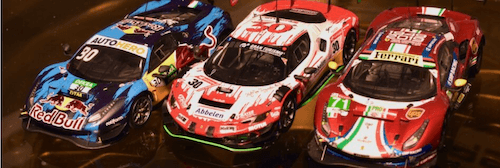
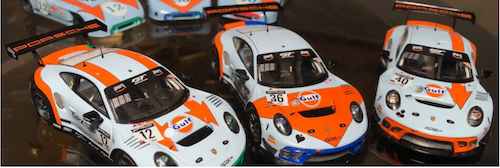
#054 GPX Porsche (August 2024)
GPX Racing paint their cars in the same famous liveries as historic Porsches that raced Targa Florio and Le Mans!
7 models in collection
#055 Silver Arrows (August 2024)
To preserve weight and stay below the maximum allowed, all white paint was removed. The cars became the nick name “Silberpfeilen” or Silver Arrows.
15 models in collection
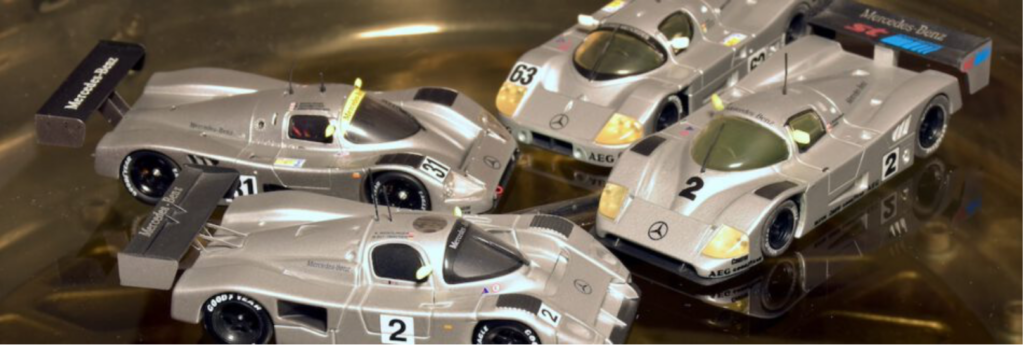
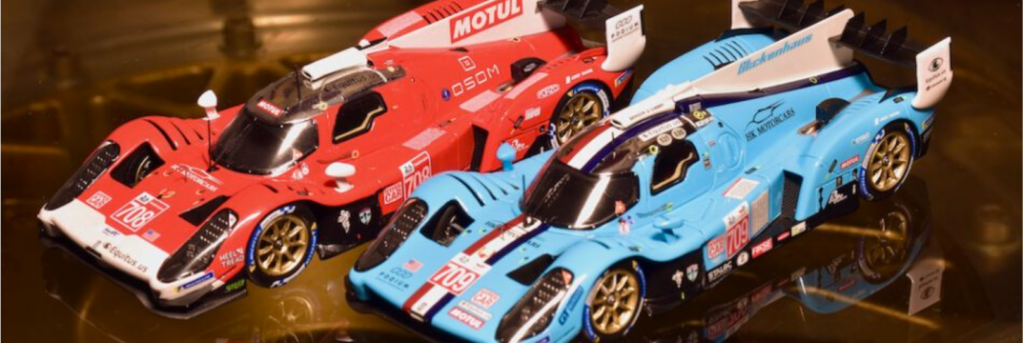
#056 Hypercars & Prototypes (August 2024)
When we speak about Hypercars, we must not forget that half of the contenders come from a slightly different concept of LMDh prototypes (Le Mans Daytona hybrid) that run as GTP in the USA.
27 models in collection
#057 Lancia (August 2024)
Lancia had some other famous liveries before they partnered with Martini, such as Marlboro and Alitalia. These and other Lancia’s can be found in this topic.
17 models in collection
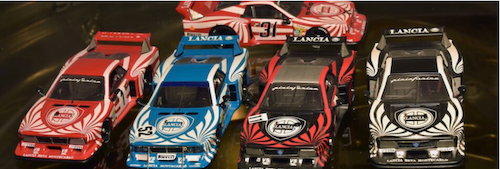
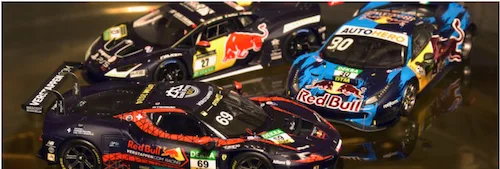
#058 Red Bull (September 2024)
In the 1990’s the Austrian energy drink was just starting to gain brand awareness. Dietrich Mateschitz chose the slogan “Red Bull gives you Wings” and began sponsoring motorsports.
27 models in collection
#059 Brumos Porsche (September 2024)
Brumos originated from BRUndage MOtorS and was a Porsche dealer in Jacksonville, Florida. Peter Gregg bought the company and retained the name Brumos, he was entrepreneur and an excellent racing driver.
17 models in collection
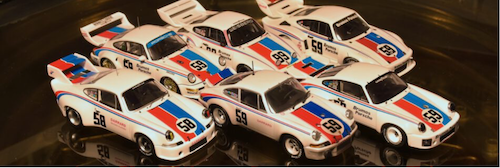
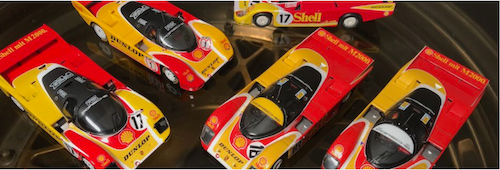
#060 Shell (September 2024)
Shell is one of the largest oil companies in the world and connected with motorsports for many years. In this topic I will show all the cars that have some kind of Shell livery and not just a small sticker.
22 models in collection
#061 Bastos & Belga (September 2024)
Bastos and Belga are both Belgian tobacco brands (both part of British American Tobacco) and were very active in sponsoring motorsports, especially touring cars at Spa-Francorchamps.
16 models in collection
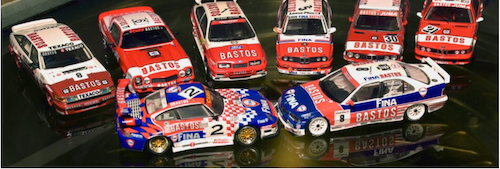
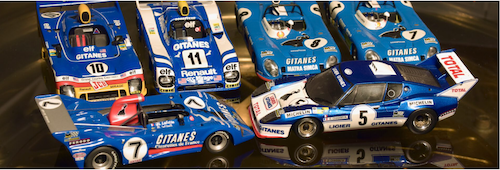
#062 Gitanes & Gauloises (September 2024)
Gitanes and Gauloises were part of the French state-owned tobacco company SEITA. It those years, Gitanes was often seen on French racing cars such as the Le Mans Matra-Simcas and the Ligier Formula 1 team.
17 models in collection
#063 Marlboro (September 2024)
Marlboro is probably the most well known tobacco sponsor in motorsport for their long partnerships with McLaren F1 in the Lauda-Prost-Senna era and afterwards with Scuderia Ferrari and Michael Schumacher.
21 models in collection
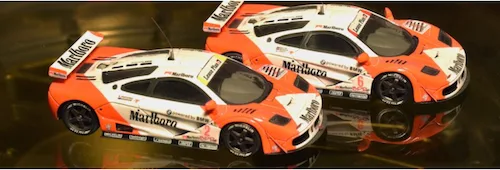
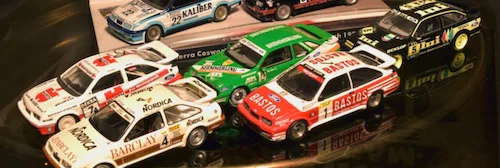
#064 Ford touring cars (October 2024)
Ford has produced some very fine championship winning touring cars over the years. In this topic I will show more conventional Escorts, Capris and Sierras in my collection.
33 models in collection
#065 Manthey Porsche (October 2024)
The green and yellow Porsches have won the Nürburgring 24-hour race many times. Nowadays Porsche AG has a 51% share in Manthey Tuning and Racing and the team prepares and races the Porsche works cars in Le Mans an FIA WEC.
25 models in collection
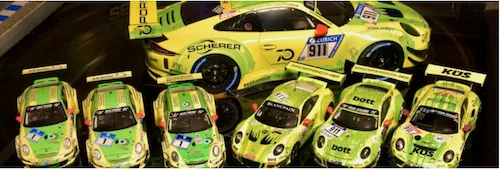
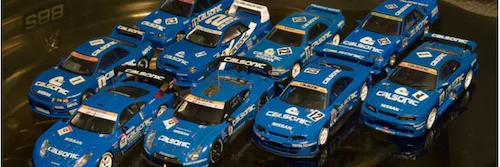
#066 Nissan touring & GT (October 2024)
The Nissan Skyline is famous for its result on the race tracks and very popular in the tuning scene. The Japanese brand also raced with turbo-charged Bluebirds and the Z/ZX series.
28 models in collection
#067 Honda, Acura & Mugen (October 2024)
Racing engines and cars in the USA are often prepared by HPD which stands for Honda Performance Development, which are raced as Acura.
22 models in collection
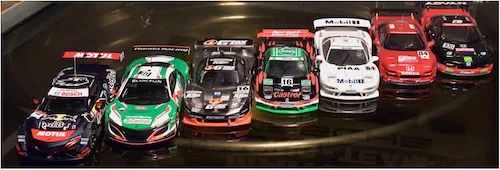
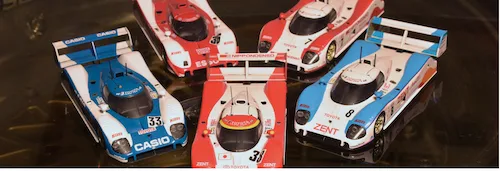
#068 Toyota prototypes (October 2024)
This collection contains the Group C cars from Toyota such as the screaming TS010 and many turbo cars. Also I have models of the IMSA Eagle-Toyota’s in this collection.
25 models in collection
#069 Castrol (October 2024)
Numerous racing cars were lubricated by Castrol, but only a few of them actually raced in the famous red and green colors of the British oil brand.
24 models in collection
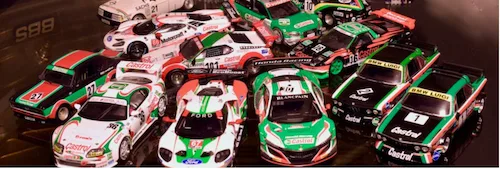
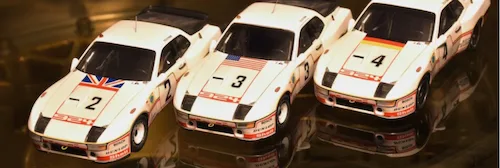
#070 Front-engined Porsches (November 2024)
Porsche is famous for their rear-engined 911, but they also produced some very fine front-engined cars with very good handling and balance.
10 models in collection
#071 Porsche 936 factory cars (November 2024)
The Porsche 936 was a kind of kit car that used body parts, suspension and brakes from the 917 Can-Am Spyders and the engine from the 911 RSR Turbo.
18 models in collection
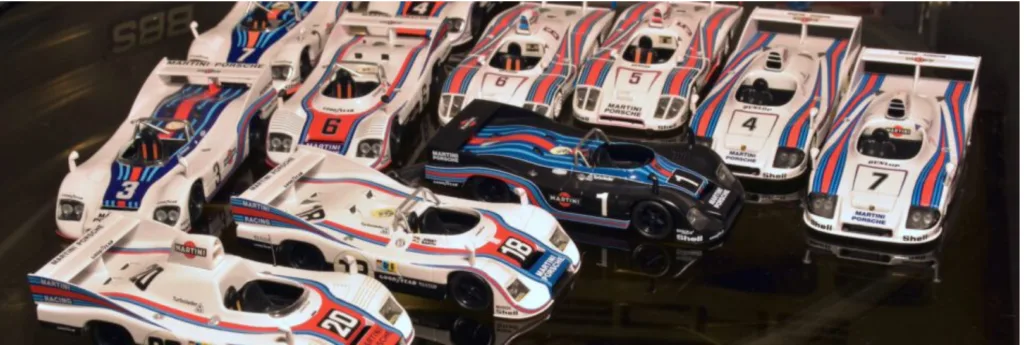
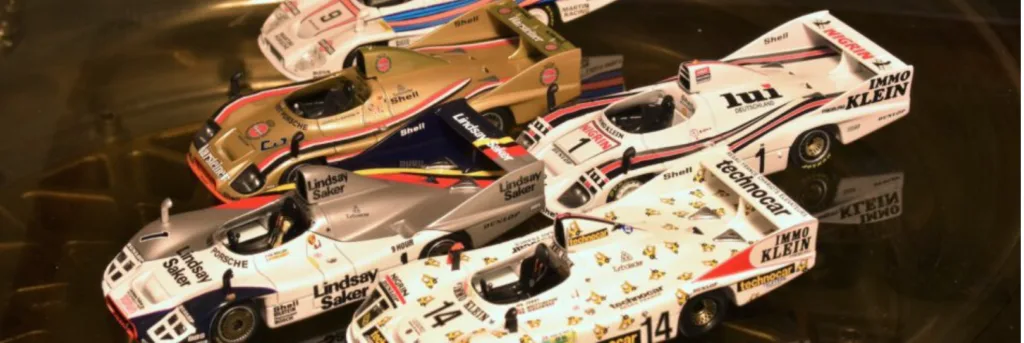
#072 Porsche 908 & 936 clients (November 2024)
While Porsche developed the 936 as prototype for the 3-liter category, Reinhold Joest used Porsche 908 tube frames to build similar cars. The history of these cars run parallel with that of the Porsche 936.
19 models in collection
#073 BMW M1 (December 2024)
The BMW M1 was the first super car of the German manufacturer. The intention was that 400 cars needed for homologation would be built at the Lamborghini factory. The entire process was delayed after Lamborghini struck financial troubles.
24 models in collection
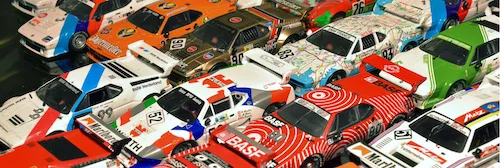
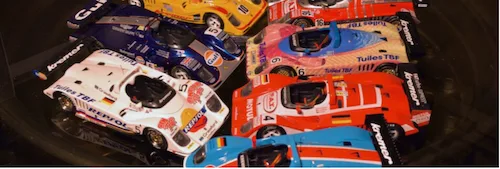
#074 Kremer prototypes (December 2024)
After twenty years of preparing GT’s, the Kremer brothers started racing prototypes; at first as another Porsche customer team but soon they started building their own cars based on Porsche components.
28 models in collection
#075 McLaren F1 GTR (December 2024)
The Gordon Murray designed F1 GTR was the first road going car that McLaren built. It was immediately popular for racing in the BPR-series which would become the official FIA-GT Championship.
32 models in collection
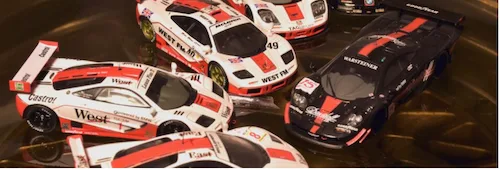
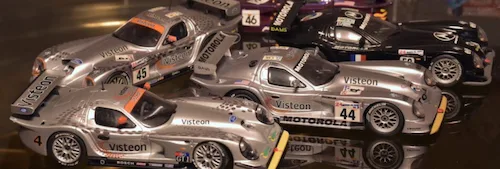
#076 Panoz & Saleen (January 2025)
Don Panoz his cars were powered by American Ford V8 engines. This is also the case with Saleen, Steve Saleen was well known as Ford Mustang tuner. in 2000 he launched the S7, a mid-engined sports car that was successful in GT racing.
24 models in collection
#077 Audi Touring & GT (January 2025)
In the 70’s Audi started with some motorsport activities with their Audi 80, but the great breakthrough was the introduction of their all-wheel drive models “Quattro”.
30 models in collection
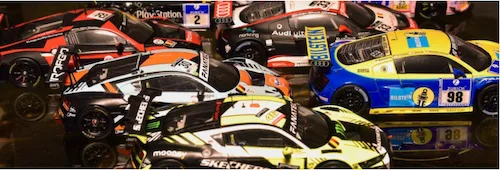
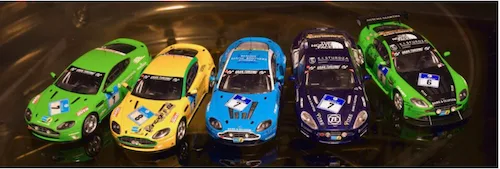
#078 Aston Martin GT (January 2025)
Aston Martin is an English luxury brand that produces GT’s that are also used in motorsports. They also have a Formula One team and are currently (January 2025) developing the Valkyrie Hypercar for Le Mans and the World Championship.
28 models in collection
#079 Gulf prototypes (February 2025)
In 1994 the Kremer K8 appeared at Le Mans in a slightly different color scheme. Since then, Gulf is back on the international race tracks. In this collection I present some fine Gulf liveried prototypes and even some formula 1.
14 models in collection
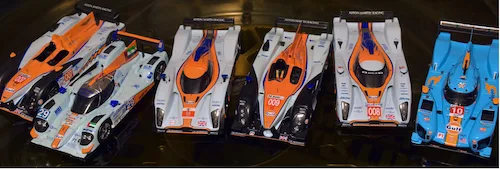
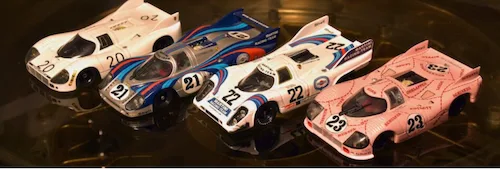
#080 Martini Porsche 908 & 917 (February 2025)
In 1970 the Porsche supported works teams were the Gulf sponsored JWA team, Porsche Salzburg that took Porsche’s first Le Mans victory and Hans-Dieter Dechent’s Martini Racing International.
23 models in collection
#081 Nissan GT1, LMP & Deltawing (February 2025)
Nissan has been active in motorsports for many years, sometimes following the main stream such as in Group C, sometimes leading the way as they did with the Skyline. And in other moments they acted completely different, for instance with the DeltaWing and GT-R LM.
25 models in collection
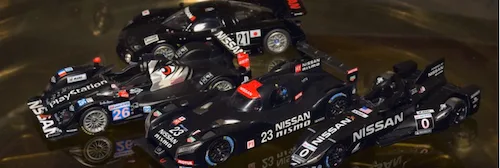
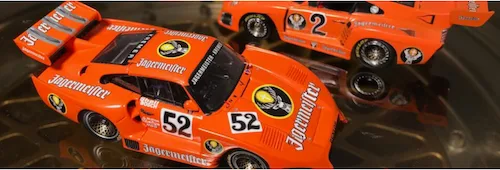
#082 Jagermeister GT (February 2025)
Eckhardt Schimpf was Jägermeister’s PR manager in the early 1970’s. He was a passionate racing driver and convinced the board to enter in motorsport sponsoring. Since then, the orange Jägermeister cars are familiar sight on racetracks all over Europa.
17 models in collection
#083 Alfa Romeo (February 2025)
Alfa Romeo has always been involved in various motorsports with achievements giving the marque a sporty image. Alfa Romeo managed to held this image despite financial losses and different ownerships.
27 models in collection
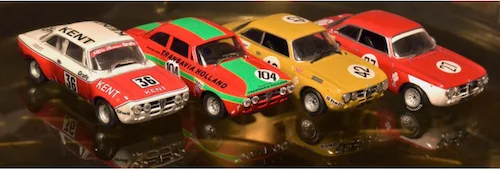
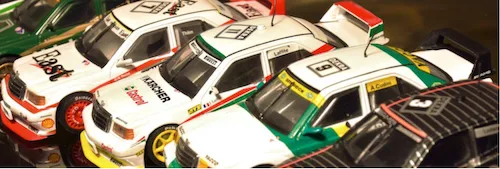
#084 Mercedes-Benz (March 2025)
Mercedes quit all motorsports activities after the terrible accident at Le Mans in 1995. In the 1970’s AMG returned to the tracks with the impressive Red Pig.
34 models in collection
#085 Kremer Porsche GT (March 2025)
The Kremer Brothers Erwin and Manfred were one of the first Porsche tuners. Kremer often changed existing Porsche models and built their own versions of it and would rename these with a ‘K’ in the type.
33 models in collection
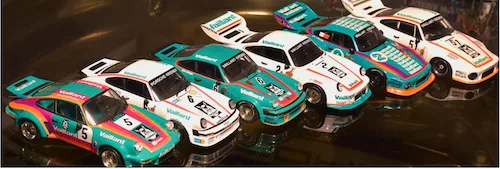
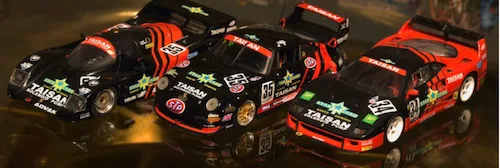
#086 Yokohama Advan (March 2025)
Advan is a brand from Yokohama for the sporty tires. The distinctive red and black can be found on cars in the Japanese touring car, GT and sportscar series, but also on some Japanese entries during the Le Mans 24-hour race.
19 models in collection
#087 Porsche 911 GT1 (April 2025)
GT1 was supposed to be a category for exotic GT’s such as Jaguar XJ 220, Ferrari F40, McLaren F1 and Porsche 911 turbo. But soon, manufacturers started using the loop hole again by developing homologation specials, the Porsche GT1 was one of the first.
31 models in collection
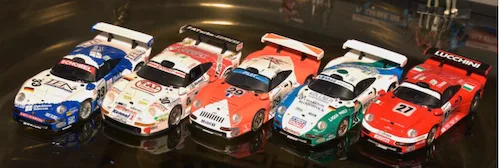
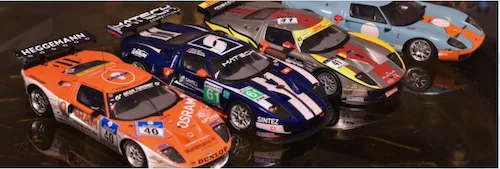
#088 Ford GT (April 2025)
The Ford GT40 MkII finally won Le Mans in 1966. The extreme MkIV did the same in 1967 and in the next two years another older version won again. More than 35 years later another generation Ford GT was launched.
8 models in collection
#089 Rondeau (April 2025)
Jean Rondeau was a French race car driver and constructor, who won the 24 Hours of Le Mans in 1980 in a car bearing his own name, an achievement which remains unique in the history of the race.
17 models in collection
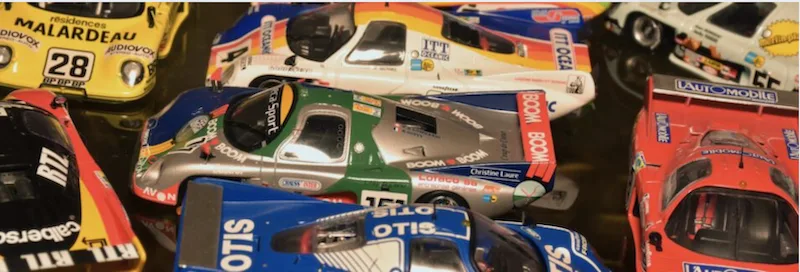
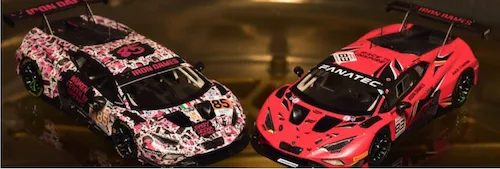
#090 Italians (May 2025)
Ferrari has its own collections, so do Lancia and Alfa Romeo. In this collection you will find the models from three other Italian luxury brands: Pagani, Maserati and Lamborghini.
24 models in collection
#091 Lola LMP (June 2025)
Lola launched a new generation sport cars with (part) carbon fiber chassis’ in 1998. Successes were achieved especially in the P675 / LMP2 categories.
38 models in collection
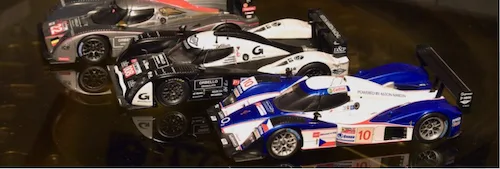
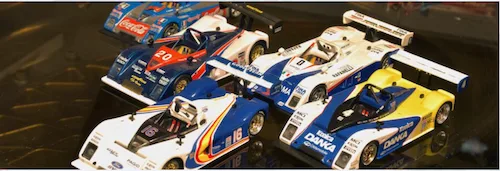
#092 Riley (June 2025)
Bob Riley partnered with Mark Scott and they built the Riley & Scott Mk III which was a successful World Sports Car that made use of different engines and was loved for its simplicity and easy handling.
24 models in collection
#093 American Porsche GT teams (July 2025)
Famous American Porsche teams are Penske, Holbert, Interscope, Dick Barbour, Bob Akin and many more that can compete with the best German teams such as Kremer and Joest.
30 models in collection

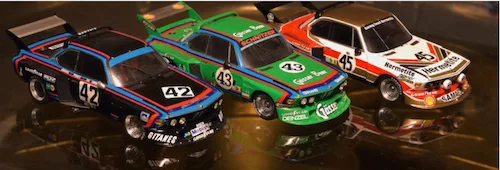
#094 BMW CSL E9 (August 2025)
The BMW E9-model was released first as 2800 CS in 1968, a few years later it was upgraded to the 3.0 CS carburetor version and CSi with fuel injection. It was very successful in touring car racing in the special homologated CSL versions
40 models in collection
#095 Hawaiian Tropic (September 2025)
Hawaiian Tropic, producer of sun screens started sponsoring Le Mans cars and what better way to attract attention than to add some sexy ladies.
26 models in collection+ 5 sets of girls
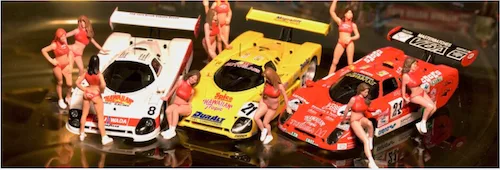
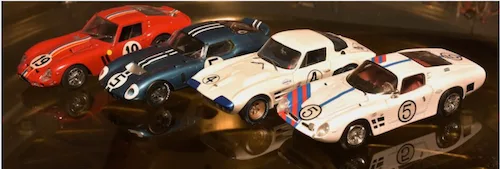
#096 GTs & sports cars 1950’s & 1960s (October 2025)
Here you will find a quite random selection of classic GT and sports cars from the early 1950’s until the end of the 1960’s.
27 models in collection
#097 GT’s from the 1970s (October 2025)
A quite random selection of classic GTs from the 1970’s. I left some models out, these can already be found in other collections.
28 models in collection
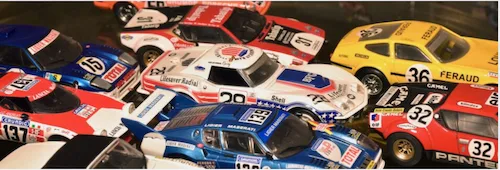
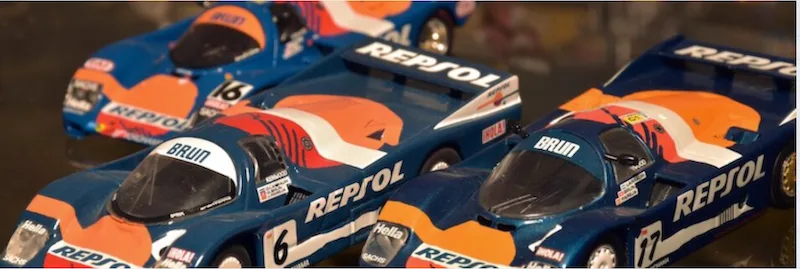
#098 Repsol (November 2025)
Repsol YPF is a Spanish oil and gas company that supports motor racing (cars and bikes).
13 models in collection
#099 Porsche Cup (November 2025)
Porsche produces a special series of 911 Cup cars every year. These are used in the Supercup and numerous Carrera Cups all over the world.
26 models in collection
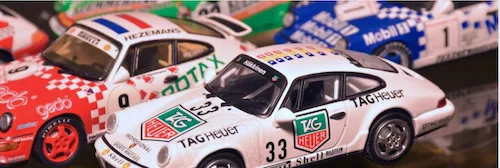
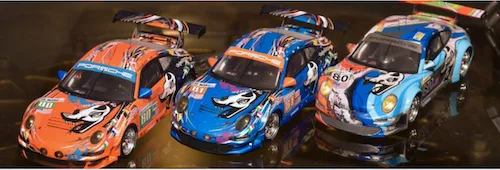
#100 Art Cars (November 2025)
To me, the definition of an Art Car is a racing car with a specially designed livery – maybe by a known artist – that in most cases has no direct link with the usual color schemes of the brand or main sponsor.
44 models in collection
#101 Reynard (& successors) (December 2025)
The history of Reynard is quite extensive and complex. Especially that from the Reynard 02S, a game changer that has many descendants.
27 models in collection
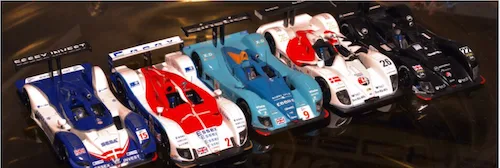
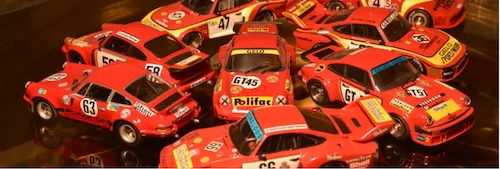
#102 Gelo (December 2025)
Georg Loos was a German entrepreneur, team manager and racing driver. His Gelo Racing Team competed in the Interserie, DRM and world championship including Le Mans between 1968 and 1980.
13 models in collection
